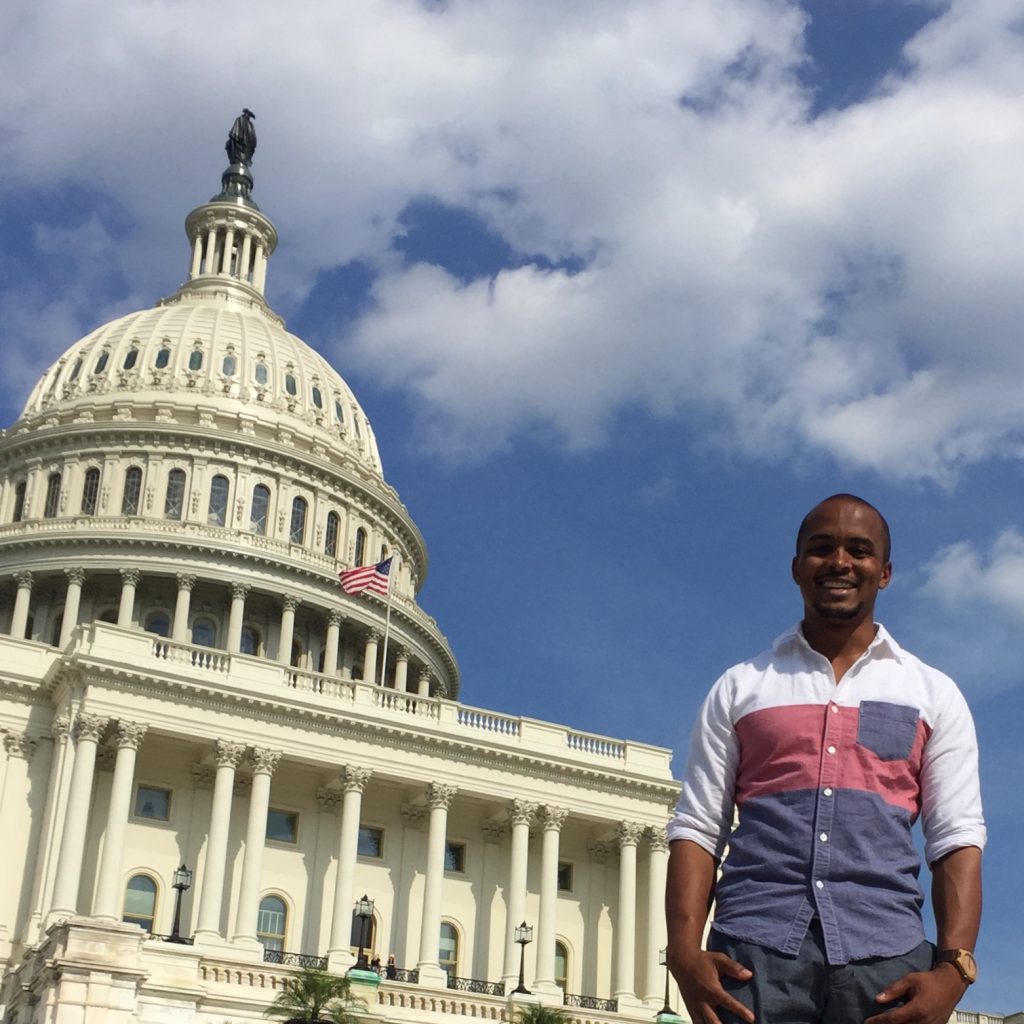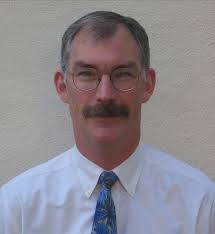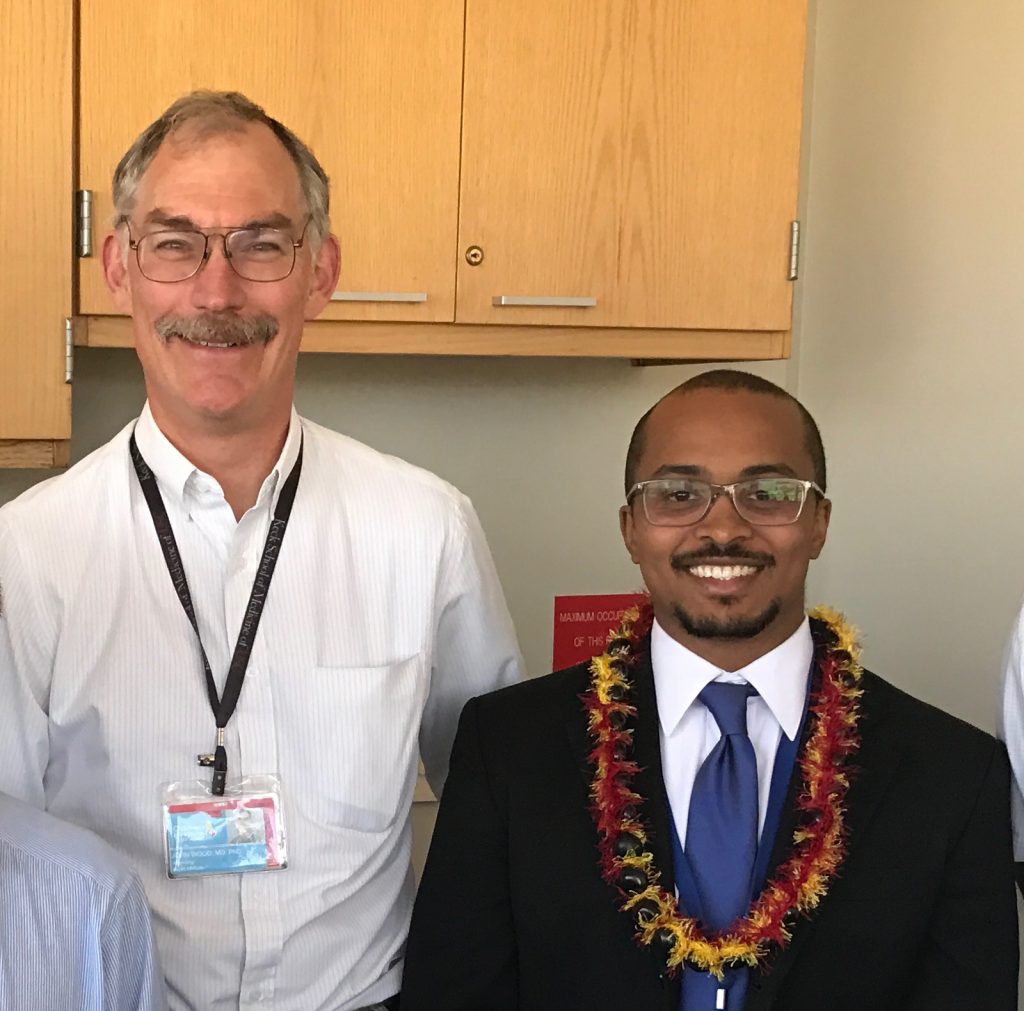
By Maria Eugenia Caliguri

Adam Bush received his Bachelor’s Degree in Physics from Loyola Marymount University, and his Master’s Degree and PhD, both in Biomedical Engineering, from the University of Southern California, where he worked under the supervision of Prof. John Wood. He is currently a post-doctoral research fellow in Radiology at Stanford University.
John C. Wood trained in Electrical Engineering at UC Davis, received his MD/PhD in Bioengineering from the University of Michigan in 1994, and did a residency and fellowship in Pediatric Cardiology at Yale. When he joined the Children’s Hospital in Los Angeles, as Professor of Pediatrics and Radiology, he was given the “keys to the car” to build a pioneering cardiac imaging program. He first crossed paths with Adam in 2009. In the time since then, they have developed a fantastic mentor-mentee relationship, which was evident throughout this conversation.
Most recently the two have focused on improving the applicability of T2 relaxation under spin tagging (TRUST) MRI oximetry in patients with sickle cell disease (SCD).
MRMH: Can you briefly explain what TRUST is?
Adam: It is a technique used to measure the T2 of intravascular blood in large brain vessels. The measurements obtained are converted into oxygenation values using empirical, predetermined calibration curves that relate T2 values to hematocrit and oxygen saturation.

John: TRUST is an extremely robust, widely validated technique. Its major technological innovation is the use of arterial spin labeling (ASL) tagging to remove partial volume effects in T2 measurements. We are grateful to Dr Hanzhang Lu, currently at Johns Hopkins University, for sharing his code with the MRI community, as this has opened the way for scientists worldwide to gain experience and insights across different blood diseases.
MRMH: What is SCD, and how might your results impact its clinical management?
Adam: SCD is a common genetic disease in the USA, affecting approximately 100,000 people, particularly of African descent. Having one mutated copy of the SCD gene – a condition called sickle cell trait – provides protection against malaria. Instead, mutation of both alleles leads to the production of sickle hemoglobin (HbS), which polymerizes into long rigid fibers. This, in turn, can give rise to several complications, the worst being overt stroke, which occurs in about 11% of affected children. We hope that greater understanding of oxygen supply and demand in the SCD brain will help us to identify better biomarkers for increased stroke risk and thus to improve patient outcomes.
John: Blood transfusions and screening have recently lowered the rate of overt stroke in SCD. But there also exists something called silent stroke, which results in small white matter lesions throughout the brain. The prevalence of this form reaches 50% by the age of 30, significantly altering brain tissue integrity. Complications like these made me appreciate the urgency of reaching a better understanding of oxygen supply and demand in SCD, so as to achieve better-tailored, protective therapies.
MRMH: You have evaluated the applicability of TRUST in SCD. What are the limitations of current models when it comes to performing oximetry in sickle blood?
Adam: Let me say, first of all, that our work was made possible only thanks to the excellent previous efforts of scientists like Graham Wright, Bob Hu and Al Macovski. When dealing with SCD, a major limitation of any T2-based oximetry approach is that the empirical models are derived using bovine blood, which has different T2 properties compared with human blood. Additionally, the hematocrit range over which calibration curves were defined was limited to healthy values (35-55%), making these curves less applicable to patients with SCD, who are anemic (characterized by a lower hematocrit).
John: We were also concerned about the huge differences between healthy and SCD blood cells in terms of their structure and tendency to aggregate. For this reason, sickle blood has a different magnetic microstructure that could affect the relationship between T2 and oxygen saturation and hematocrit; we therefore felt it was essential to properly validate calibration in SCD.

MRMH: Were you surprised by your findings?
Adam: Since our initial objective was to reproduce recent literature, in which models using healthy human hemoglobin were compared with models based on bovine blood, we weren’t really expecting the surprising results that we got.
John: Previous literature had suggested that oxygen extraction is increased in SCD patients. Paradoxically, we found just the opposite. We know these brains undergo stress, and we know they suffer strokes, so it made sense to take increased oxygen extraction as a marker of brain stress. However, what we found was quite the opposite, and at first I thought Adam was crazy! Moreover, my fundamental premise, that cerebral metabolic rate is conserved in SCD, turned out to be wrong as well! Fortunately we found literature supporting the idea that blood flows too quickly through the SCD brain, precluding adequate exchange of oxygen with tissues. This convinced us that we were not crazy after all, simply observing a mismatch between oxygen supply and demand. In short, while global oxygen delivery in the SCD brain is fine, at local level it is impaired.
MRMH: Why did you choose phase contrast, as opposed to ASL, to measure cerebral metabolic rate of oxygen?
Adam: First of all, phase contrast MRI is used clinically, and this made integrating it into a research protocol quite straightforward.
John: Also, since phase contrast is completely independent of T1 and T2, we didn’t expect the technique to produce any disease-specific effects on our measurements. ASL might be less efficient in SCD. The basic problem with phase contrast is making sure you achieve enough resolution to resolve partial volume effects; this is easier in SCD because the vessels are slightly bigger.

MRMH: What were the main challenges you faced?
Adam: When performing experiments involving blood in an MRI scanner, you obviously also have to deal with the related biohazard issues. This can make the process very time consuming, but it was definitely worth the while!
John: I don’t think Adam’s sleep patterns have recovered yet! [laughs]. He spent hours in the early mornings making sure that the magnet was perfectly sterilized for the next day. Another challenge was related to the need to limit blood red cell rupture, or hemolysis: this narrowed the hematocrit we were able to study, since these cells couldn’t tolerate much manipulation. This is a fundamental limitation that could be addressed in future, larger studies.
MRMH: Are there any other shortcomings that you plan to address?
Adam: Recent work has shown that regional oxygen extraction is variable across the brain in SCD, whereas we performed measurements only in the sagittal sinus. In the future, we could address this aspect using multidimensional T2 MRI oximetry.
John: We are also looking at responses to therapies in SCD, including blood transfusion and hydroxyurea, and their impact on cerebral metabolic rate and oxygen extraction. Moreover, there is, as yet, no perfect agreement between TRUST and other magnetic-susceptibility-based oximetry techniques, either in SCD or in control subjects, and we would like to try and overcome this through the use of an independent standard.




